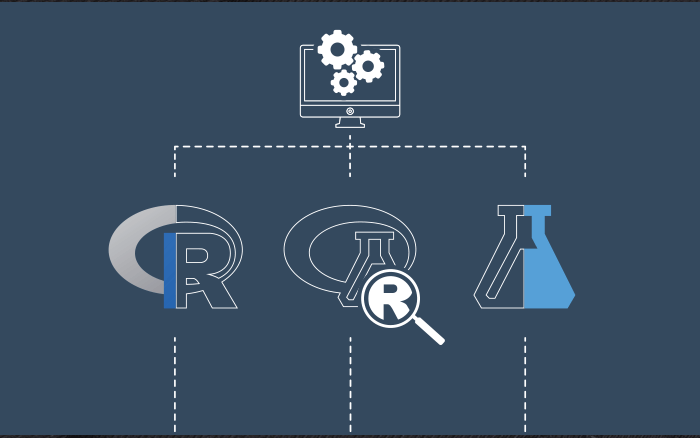
(R Example for Citizen Data Scientist & Business Analyst)
R Program to Generate Random Number from Standard Distributions
In this example, you’ll learn to generate the random number from standard distributions.
R has functions to generate a random number from many standard distribution like uniform distribution, binomial distribution, normal distribution etc.
The full list of standard distributions available can be seen using ?distribution. Functions that generate random deviates start with the letter r.
For example, runif() generates random numbers from a uniform distribution and rnorm() generates from a normal distribution.
From Uniform Distribution
Random numbers from a normal distribution can be generated using runif() function.
Additionally we can specify the range of the uniform distribution using max and min argument.
If not provided, the default range is between 0 and 1.
Example: Uniform Distribution
> runif(1) # generates 1 random number
[1] 0.3984754
> runif(3) # generates 3 random number
[1] 0.8090284 0.1797232 0.6803607
> runif(3, min=5, max=10) # define the range between 5 and 10
[1] 7.099781 8.355461 5.173133
In the program above, we can also generate given number of random numbers between a range.
From Normal Distribution
Random numbers from a normal distribution can be generated using rnorm() function.
We need to specify the number of samples to be generated.
We can also specify the mean and standard deviation of the distribution.
If not provided, the distribution defaults to 0 mean and 1 standard deviation.
Example: Normal Distribution
> rnorm(1) # generates 1 random number
[1] 1.072712
> rnorm(3) # generates 3 random number
[1] -1.1383656 0.2016713 -0.4602043
> rnorm(3, mean=10, sd=2) # provide our own mean and standard deviation
[1] 9.856933 9.024286 10.822507
In the program above, we can also generate given number of random numbers between a range.
R Examples for Beginners – R Program to Generate Random Number from Standard Distributions
Free Machine Learning & Data Science Coding Tutorials in Python & R for Beginners. Subscribe @ Western Australian Center for Applied Machine Learning & Data Science.
Western Australian Center for Applied Machine Learning & Data Science – Membership
Sign up to get end-to-end “Learn By Coding” example.
Introduction to Applied Machine Learning & Data Science for Beginners, Business Analysts, Students, Researchers and Freelancers with Python & R Codes @ Western Australian Center for Applied Machine Learning & Data Science (WACAMLDS) !!!
Latest end-to-end Learn by Coding Projects (Jupyter Notebooks) in Python and R:
Applied Statistics with R for Beginners and Business Professionals
Data Science and Machine Learning Projects in Python: Tabular Data Analytics
Data Science and Machine Learning Projects in R: Tabular Data Analytics
Python Machine Learning & Data Science Recipes: Learn by Coding
Disclaimer: The information and code presented within this recipe/tutorial is only for educational and coaching purposes for beginners and developers. Anyone can practice and apply the recipe/tutorial presented here, but the reader is taking full responsibility for his/her actions. The author (content curator) of this recipe (code / program) has made every effort to ensure the accuracy of the information was correct at time of publication. The author (content curator) does not assume and hereby disclaims any liability to any party for any loss, damage, or disruption caused by errors or omissions, whether such errors or omissions result from accident, negligence, or any other cause. The information presented here could also be found in public knowledge domains.